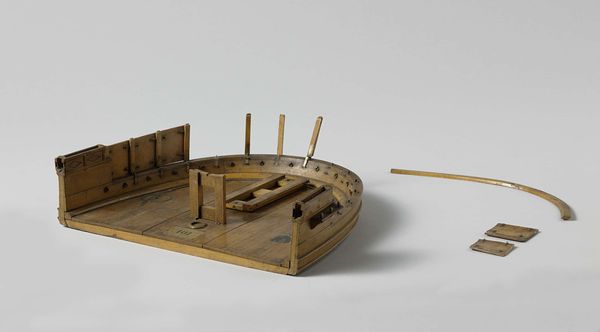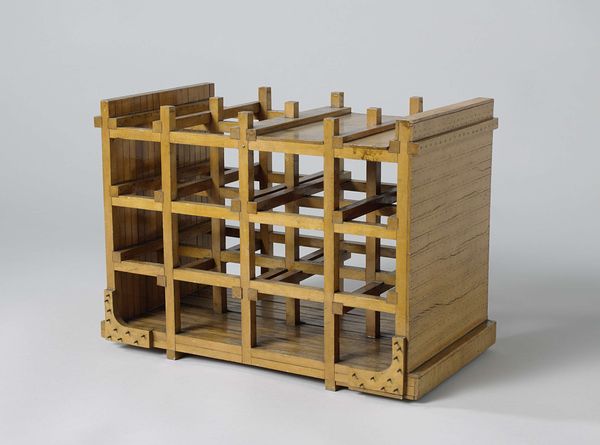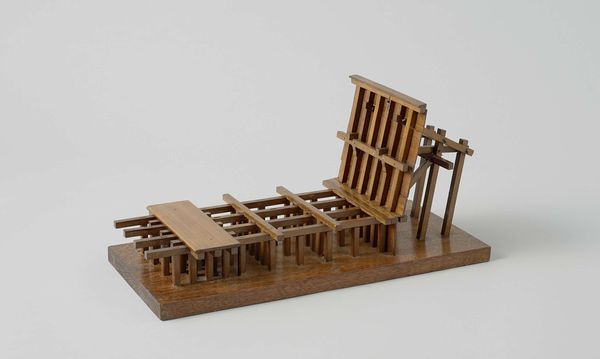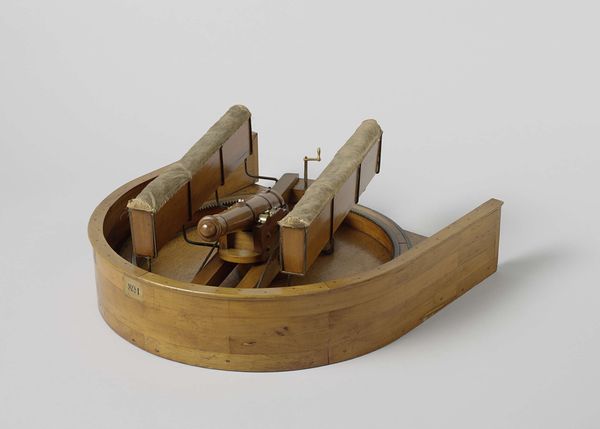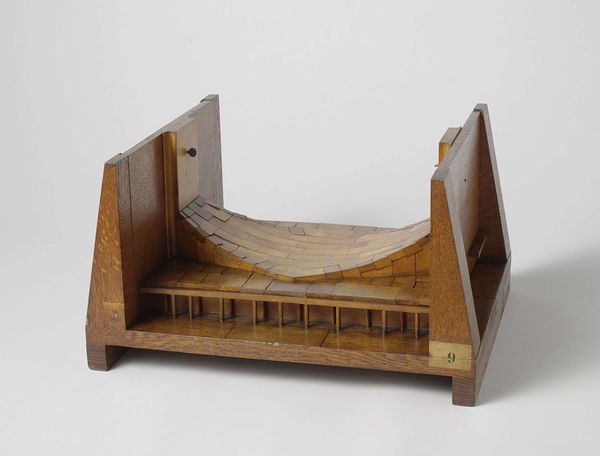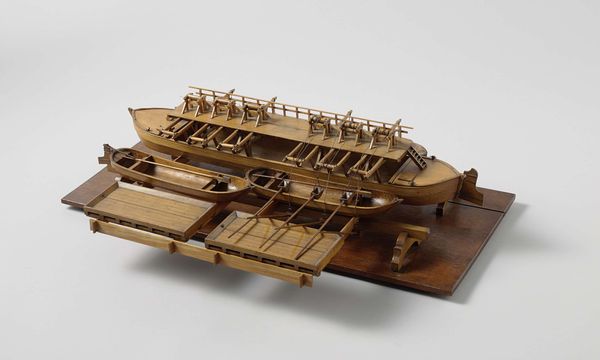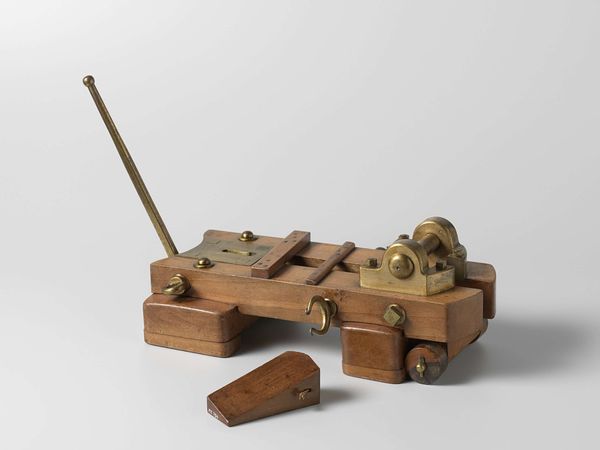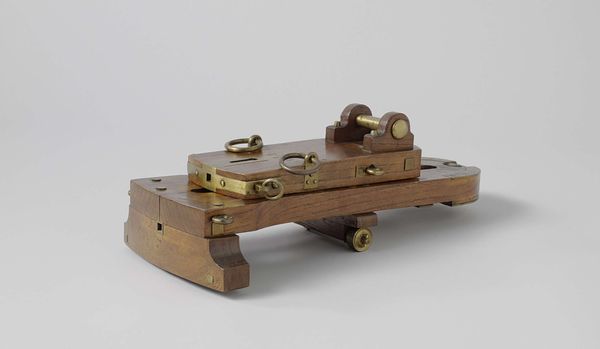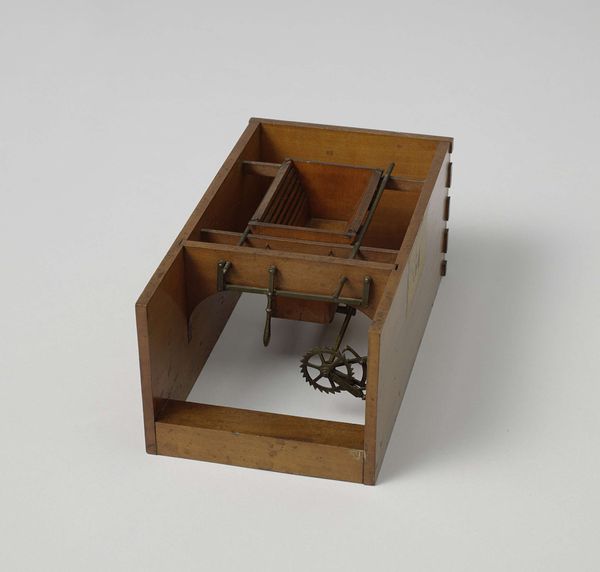
sculpture, wood, architecture
#
architectural modelling rendering
#
architectural product design
#
architectural diagram
#
architectural plan
#
geometric
#
sculpture
#
warm toned
#
architect
#
architecture model
#
architectural drawing
#
warm-toned
#
wood
#
architectural proposal
#
architecture
Dimensions: height 31 cm, width 149.2 cm, depth 93 cm
Copyright: Rijks Museum: Open Domain
Curator: Here we have a fascinating piece: a wooden model titled "Model of the Lock for the Basin at Flushing," created in 1849 by Rijkswerf Vlissingen. What are your initial thoughts? Editor: It strikes me as unexpectedly warm. The wood gives it this rustic, almost toylike quality that belies the precise engineering it represents. It feels oddly inviting. Curator: That's interesting. I tend to see it through the lens of its function: representing the intersection of technological advancement and social control in mid-19th-century infrastructure. Locks were integral to maritime trade, enabling economic growth but also exerting power over waterways and resources. Editor: Precisely, it reflects the political impetus for naval infrastructure investment, an intersectional manifestation of wealth and military strength, but at what cost? Looking closely, I can also see what appear to be miniature barricades in that interior portion. What might they signify? Were those included in the architectural plans themselves, or are they simply structural supports? Curator: It raises questions about who benefits from these grand projects and whose voices are excluded. The expansion of port cities like Flushing undoubtedly displaced communities. Did these structures impact their daily routines? We must acknowledge these often-overlooked social impacts. Editor: I agree completely. Looking at the material, wood, suggests localism. Perhaps the usage of this resource serves to solidify this Dutch harbor lock model as inherently *of* the area and thereby inextricably and historically linked to local commerce, policy, and governance. Curator: Indeed. This work gives us tangible insights into the mindset of a society rapidly industrializing and consolidating its power, an insight not to be taken for granted given where global power structures now sit. Editor: Well, I find that your analysis contextualizing it within sociopolitical history adds a critical depth, particularly considering current debates around infrastructure and social justice. I come away seeing a much richer narrative than my first glance allowed.
Comments
No comments
Be the first to comment and join the conversation on the ultimate creative platform.
